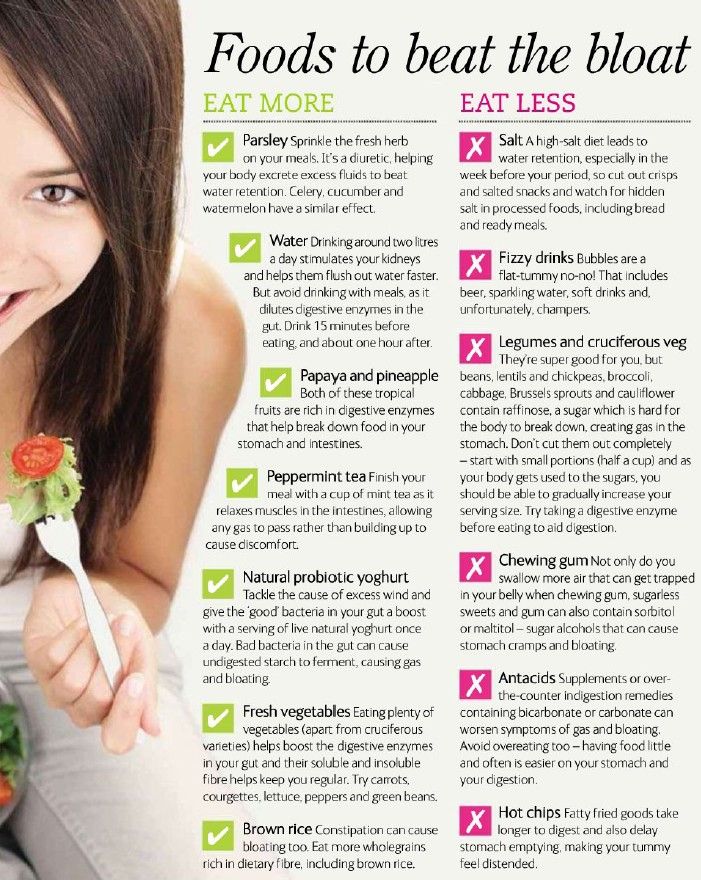Butternut squash homemade baby food
Butternut Squash Baby Food (Stage One)
This homemade Roasted Butternut Squash Baby Food Puree recipe not only contains calcium, folate, fiber, and vitamins A and C, but it is also a deliciously smooth way to introduce butternut squash to your baby! It’s a great Stage 1 baby food for 4-6 months and up!
Medically reviewed Jamie Johnson, Registered Dietitian Nutritionist (RDN), and Lauren Braaten, Pediatric Occupational Therapist (OT).
Butternut Squash Baby FoodThis butternut squash puree is a quick and simple recipe that involves roughly 5 minutes of hands-on time! 🖐
We’ll let the oven do all the hard work for the rest of the prep time. Cuz why should we work harder 💪 when we can work smarter? 🙋♀️
Butternut squash contains calcium, folate, fiber, and vitamins A and C and is considered one of the very best first foods for your baby.
Is it your first time making homemade baby food? Then I suggest you start this journey by reading my in-depth Guide on How to Make Homemade Baby Food. The detailed guide goes over all the important information such as the best cooking tools to have on hand, safe storage, how to know when baby is ready for solids, how to introduce purees, the best first foods for baby, and more! You can also check out my best-selling cookbook for even more information and recipes!
Butternut Squash Video
Watch this video to see just how easy it is to make this delicious puree for your baby!
Reasons to Love this Butternut Squash Puree- creamy and smooth
- great for 4-6+ months
- stage one baby food
- healthy — full of essential nutrients for your baby
- easy to make — requires only 5 minutes of hands-on time
- babies will love the sweet and earthy taste
- homemade
- freezer-friendly
- budget-friendly
Health Benefits of Butternut Squash
- High levels of antioxidants and vitamins A and C, which boosts the immune system and reduces inflammation
- A good source of potassium that helps keep bones healthy
- Contains a protein that may be a potent anticancer agent
- Provides calcium to help strengthen bones and folate to help with brain development
Make sure to read the recipe card below for full ingredients and instructions!
- Butternut Squash: This is an easy-to-find, inexpensive, and nutritious food for your baby! When selecting butternut squash, look for a firm squash that has a solid beige color skin without bruising or damage marks.
 The insides will range from bright yellow to burnt orange, so don’t be alarmed if yours is somewhere in that color range.
The insides will range from bright yellow to burnt orange, so don’t be alarmed if yours is somewhere in that color range. - Thyme or Rosemary: We are kicking up the flavor profile with a fun and fresh herb — thyme or rosemary. Either of these herbs will tone down the earthiness of the squash and ramp up its freshness and citrus aspect. You can’t go wrong with either. But you can always skip adding herbs and spices to your baby food if you prefer (see more below).
Adding Healthy Fats Tip: If you are looking to add some extra healthy fat to your baby’s meals, then you can drizzle the butternut squash with extra virgin olive oil before roasting. Olive oil is a healthy fat that is full of omega 3 and omega 6 that helps baby absorb vitamin D which is important for bone growth and strengthening.
Tools NeededThese tools will make it a lot easier for you to make this healthy Sweet Potato puree. For more of my favorite kitchen tools make sure to check out my online shop.
- Baking Sheet
- Blender or Food Processor
- Knives
- Freezer Tray
- Storage Containers for Fridge
- Stasher Bag
- Bib with catch pocket
- Reusable pouches
- Heat Oven: Preheat the oven and line a baking sheet.
- Prep Squash: Cut the butternut squash in half and scoop out the seeds. Place them on the baking sheet with the flesh side down, and brush with olive oil (optional).
- Bake: Place the baking sheet in the oven and bake until easily pricked with a fork.
- Scrape: Let it cool, and then scrape off the skin until you only have the butternut squash left. Add to the blender or food processor.
- Add Herbs: Add in a pinch of thyme or rosemary to the butternut squash.
- Puree: Turn on the blender and puree until smooth, adding liquids if needed.

- Serve or freeze for another meal.
While I love the earthly, caramel flavor of roasted butternut squash, there are several ways you can cook butternut squash for baby food.
SteamingPeel and roughly chop 1 butternut squash. Place the cubes into a steamer basket over 2 inches of boiling water for 10-15 minutes or until tender when pricked with a fork. Puree in a blender as directed below.
BoilingPlace 1 peeled and roughly chopped butternut squash into a medium saucepan, add enough water to cover the butternut squash, and bring to a boil. Reduce to simmer and cook for 7-10 minutes or until tender when pricked with a fork. Puree in a blender as directed below. Note that boiling the butternut squash decreases the nutritional value of the puree since a lot of the nutrients are thrown out with the water after cooking.
Saving Time Tip: Steaming or boiling butternut squash are great methods to use if you are using prepared or frozen butternut squash. I have found both peeled and cubed fresh or frozen butternut squash in my grocery store, which are both viable options if you are short on time.
I have found both peeled and cubed fresh or frozen butternut squash in my grocery store, which are both viable options if you are short on time.
Frequently Asked Questions
Can butternut squash be baby’s first food
Butternut squash can 100% be your baby’s first food if you want it to be. It is recommended to wait to introduce the top eight allergen foods to your baby once a few other well-tolerated foods have been introduced, but otherwise, foods can be introduced in any order so choose whatever you are most excited for your baby to have.
Is butternut squash a common allergen for baby?
No, butternut squash is not a common allergen, however, as with any food, start with a small portion and be aware of any signs that might be an allergic reaction after introducing it.
When can baby eat butternut squash?
Babies can have butternut squash as one of their first foods. When a baby can start on solids is determined by their own rate of development, which generally comes between 4-6 months of age. Some of the developmental milestones babies need to reach in order to start solids include: if your baby has solid control of their head and neck, if your baby has doubled in weight, and if your baby is reaching for or opening their mouth when you eat (see my guide here). Before you start your baby on purees, you should consult with your pediatrician to make sure your child is developmentally ready.
When a baby can start on solids is determined by their own rate of development, which generally comes between 4-6 months of age. Some of the developmental milestones babies need to reach in order to start solids include: if your baby has solid control of their head and neck, if your baby has doubled in weight, and if your baby is reaching for or opening their mouth when you eat (see my guide here). Before you start your baby on purees, you should consult with your pediatrician to make sure your child is developmentally ready.
Can you add spices or herbs to this baby puree?
Yes! You can add in a pinch of chopped rosemary to this recipe, but feel free to use the following spices instead: basil, cilantro, ginger, nutmeg, coriander, mint, cinnamon, or mild curry powder (see quantity recommendations in the recipe card).
Tip on Spices: I always add spices or herbs to my baby food purees, but you can choose to leave them out in all of your baby food. You do you! Either way, this puree will surely taste amazing.
You do you! Either way, this puree will surely taste amazing.
Does butternut squash cause constipation for babies?
Butternut squash, though unlikely, may cause constipation in some babies, so avoid giving too much.
How to Store Butternut Squash Baby FoodRefrigeratorYou can store this puree in an airtight container in the fridge for up to 4 days.
FreezerThis puree can be frozen for up to 4 months.
- Spoon puree into a freezer storage container– do not overfill.
- Place the lid on the storage container or cover with a piece of saran wrap, and label with the date and recipe name.
- Place the tray into the freezer and let it freeze completely — preferably overnight.
- Pop-out the baby food cubes and place them in a ziplock baggie or stasher bag. Don’t forget to relabel the baggie or stager bag for future reference.

Need more information on how to store your baby foods? Head over to my Best Baby Food Storage Containers – Plus 6 Tips on Freezing and Thawing post!
Label Tip: Don’t forget to label your purees before you place them in the fridge or freezer with the name of the puree and the date you made it. Take it from me; by the end of the week, you will completely forget what is in your freezer and how long it’s been there. 😉
Puree Feeding Tips
- Follow your baby’s lead – when feeding purees from a spoon, sometimes there’s a tendency to keep offering bites past the point of your baby being full. Always follow baby’s cues for when they are done eating. Turning away from the spoon, closing her mouth, or pushing food away are all signs that baby is finished with the meal.
- Trial adding a little seasoning or spice to purees – babies like flavor! Or consider changing the temperature of purees from time to time, to slightly warmed or slightly chilled.
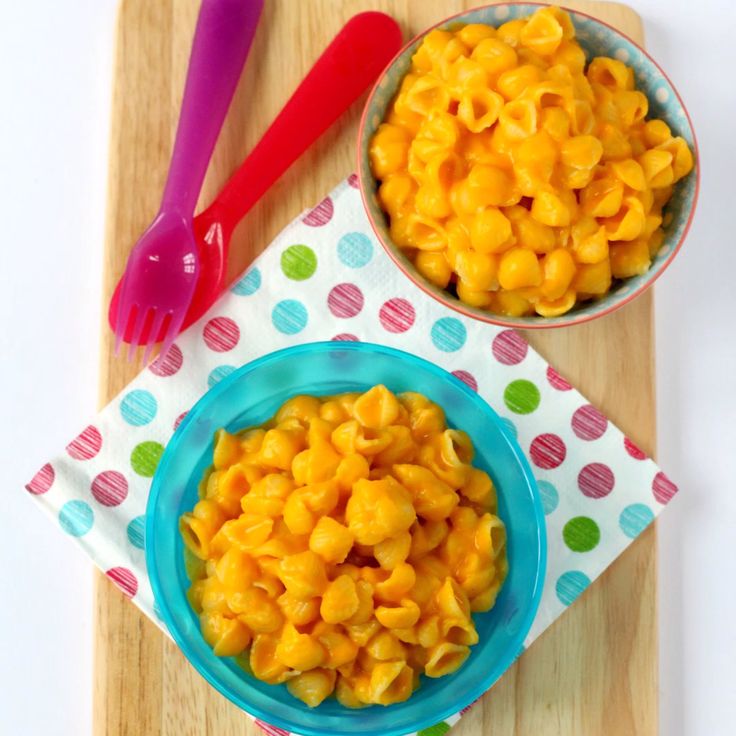 Varying these aspects adds to the sensory experience!
Varying these aspects adds to the sensory experience! - Place a small amount of puree on the tray during spoon feeding, so that your baby can dip their fingers or hands in the puree. Allowing baby to explore foods in this way helps them learn to self-feed and can help them be more willing to try new textures and foods in the future.
While this butternut squash puree is tasty by itself, it’s also super easy to mix and match with other nutrient-dense baby food purees. So give these fun flavor combos a try!
- Apples
- Carrots
- Pears
- Cherries
- Quinoa Baby Cereal
- Chicken
- Corn
- Sweet Potato
- Soft Tofu
- Pumpkin
- Mango
- Cauliflower
- Yogurt
I’D LOVE TO KNOW HOW IT TURNED OUT! LEAVE A COMMENT AND A ⭐️ RATING BELOW 👇
Or watch a shortened version of the video here.
- 1 butternut squash
- 1 tsp fresh thyme or rosemary, roughly chopped
- 1-2 tsp olive oil (optional)
- 1/2-1 cup liquid (water, fresh breast milk, formula, stock or bone broth)
Preheat: Heat oven to 450 degrees F. Line baking sheet with a silicone mat, tin foil or parchment paper.
Prep: Cut butternut squash in half, deseed and place flesh side up, skin side down on the baking sheet. Optional – feel free to drizzle the squash with 2 teaspoons of olive oil for some added healthy fat.
Roast: Place the baking sheet into the oven and bake for 45-60 minutes or until you can easily prick the squash with a fork.
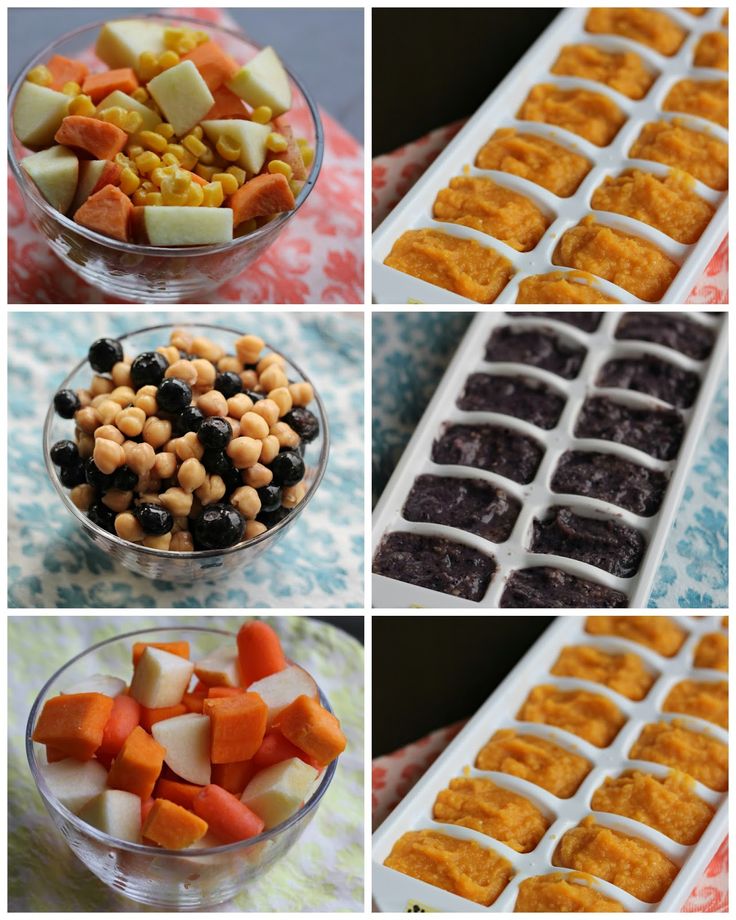
Peel: Let cool until you can handle the squash with your hands. Scrape the flesh off of the skin and place in a blender or food processor.
Add Herbs: Add the thyme or rosemary to the blender.
Puree: Turn on the blender or food processor and puree, adding liquid in 1/4 cup increments until you have the desired consistency. I had to add in 3/4 cup of water to my puree shown below.
Eat: Serve or freeze for later.
Age: 4-6 months and up
Yield: 25 ounces
Additional Spices: Feel free to sub the thyme or rosemary for 4 chopped basil leaves, 1 tsp chopped cilantro, 1/2 tsp minced fresh ginger, 1/2 teaspoon nutmeg, 1/2 tsp coriander, 1/2 tsp cinnamon or even 1/2 tsp of mind curry powder.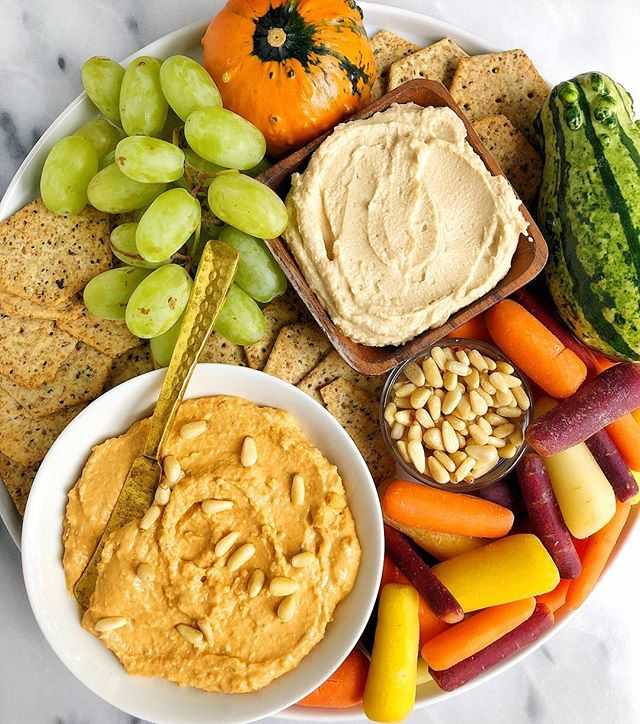
Freezer Tray
Blender
Silicone Baby Bibs
Bumkins Baby Bowl
Tripp Trapp High Chair
GreenPan Cookware
Did you make this recipe?
Tag @babyfoode on Instagram and hashtag it #babyfoode!
Pin Recipe Email a Friend
Butternut Squash Puree - Healthy Little Foodies
All Posts, by Date » Baby Friendly Recipes » Puree Recipes » Butternut Squash Puree
Jump to Recipe Print Recipe
Butternut Squash Puree is a great first food for babies but it can also be served as a side dish, used in baking or stirred through risottos and sauces.
Butternut squash, or butternut pumpkin as it is known in Australia, has a sweet, nutty taste similar to pumpkin. Once cooked it can be pureed smooth and used in both sweet and savoury dishes.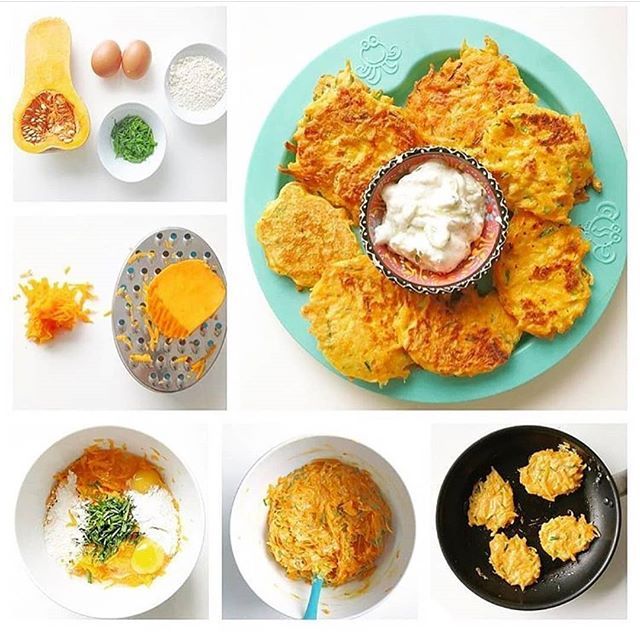
Choosing a Butternut Squash
When choosing a butternut squash look for one that is
- firm
- a solid beige colour
- free of cracks, bruised or soft spots (surface scratching is normal)
- heavy for its size
How to Make Butternut Squash Puree
Butternut squash can be baked, steamed or boiled. Baking (in my opinion) gives the best flavour and is better for retaining nutrients.
You can bake butternut squash in two halves or you may wish to peel and chop the squash into chunks before roasting. This, again, is a personal preference. Baking in two halves is less labour intensive but it does take longer to cook in the oven.
- Cut the butternut squash in half lengthwise, through the stem.
- Remove Seeds and stringy bits using a spoon
- Place skin side up on a baking tray
- Bake for 45 mins or until soft and tender
- Scoop out the soft flesh
- Puree until smooth
Butternut Squash Puree for Babies
Babies generally love the sweet taste of butternut squash. It is a delicious puree on its own, with added spices and herbs or mixed with both sweet and savoury purees. Some suggestions include:
It is a delicious puree on its own, with added spices and herbs or mixed with both sweet and savoury purees. Some suggestions include:
- A dash of cinnamon, nutmeg or allspice (you can also add this before baking)
- Pureeing with a little basil, parsley, sage or coriander.
- Apple puree
- Carrot Puree
- Chicken
- Cheese sauce
- Lentils
- Rice
- Parsnip Puree
- Pear Puree
- Spinach Puree
- Sweet Potato Puree
Other Uses for Butternut Squash Puree
- Side Dish: I’ve seen butternut squash puree recipes that are intended to be served with a Thanksgiving meal. The cooked butternut squash is pureed with butter and maple syrup (or honey) and cinnamon. To me, this sounds like a dessert but it is served along with the main meal. I must try it one day!
- Hidden (added) Veg: I don’t really agree with hiding vegetables but I do believe in adding vegetables for increased nutrition.
 Add this puree to sauces, baking, risotto and stirred into oatmeal. Some examples include:
Add this puree to sauces, baking, risotto and stirred into oatmeal. Some examples include:
- Butternut Squash Mac and Cheese
- Butternut Squash Muffins
- Butternut Squash Risotto
- Butternut Squash Oatmeal
Storage Instructions
- REFRIGERATE: Place in an airtight container and store in the refrigerator for up to 3 days.
- FREEZE: Spoon the puree into ice-cube trays and freeze until solid. (Flexible ice cube trays work best). Once fully frozen, pop them all out and place into a freezer bag or container and return to the freezer. Freeze for up to 3 months.
Looking for more puree recipes? Check out our Puree Category Page for a range of fruit and vegetable puree recipes.
Other Blueberry Recipes…
- Blueberry Baby Muffins
- Blueberry Yogurt
- Banana and Blueberry Fritters
Looking for more healthy kid recipes?Sign up for my free recipe newsletter to get new family friendly recipes in your inbox each week! Find me sharing more kid-friendly inspiration on Pinterest and Instagram.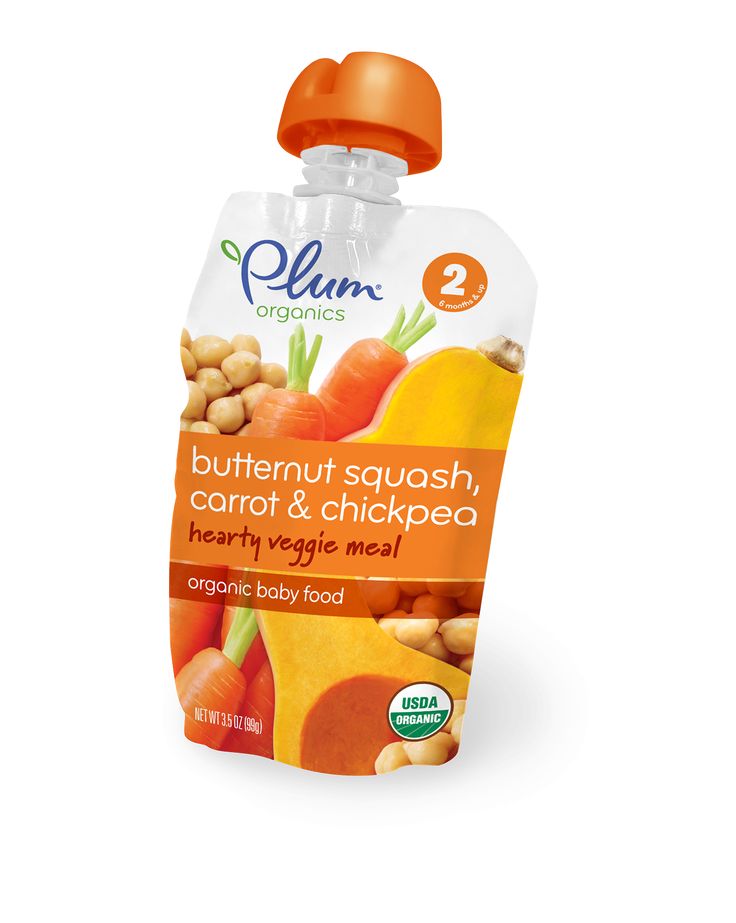
5 from 1 vote
Butternut Squash Puree
Butternut Squash Puree is a great first food for babies but it can also be served as a side dish, used in baking or stirred through risottos and sauces.
Print Recipe Pin Recipe
- ▢ 1 Medium Butternut Squash
Pre-heat oven to 200c / 390F. Line a baking sheet with parchment paper and set asidee.
Leaving the skin on, cut the butternut squash in half lengthwise, through the stem.
Scoop out the seeds and strings using a spoon.
Place the squash halves, cut side down, onto the prepared baking tray and bake, uncovered, for 45 minutes, or until tender.
Remove squash from oven and once cool enough to handle, scoop the flesh from the skin. Discard the skin
Add the flesh to a food processor (or blender) and puree until smooth.
Cooking Time: The cooking time will vary depending on the size of your squash. It should be soft to touch and the flesh should be easily scooped. Check after 40 mins and then every 5 mins after until ready.
It should be soft to touch and the flesh should be easily scooped. Check after 40 mins and then every 5 mins after until ready.
Storage: Place in an airtight container and store in the refrigerator for up to 3 days. Alternatively, spoon the puree into ice-cube trays and freeze until solid. (Flexible ice cube trays work best). Once fully frozen, pop them all out and place into a freezer bag or container and return to the freezer. Freeze for up to 3 months.
Nutritional information is a ROUGH guide only, calculated using an online nutrition calculator.
Nutrition Facts
Butternut Squash Puree
Amount Per Serving
Calories 56 Calories from Fat 9
% Daily Value*
Fat 1g2%
Saturated Fat 1g5%
Sodium 5mg0%
Potassium 440mg13%
Carbohydrates 15g5%
Fiber 3g12%
Sugar 3g3%
Protein 1g2%
Vitamin A 13288IU266%
Vitamin C 26mg32%
Calcium 60mg6%
Iron 1mg6%
* Percent Daily Values are based on a 2000 calorie diet.
Course:Puree
Cuisine:Puree
Keyword:Butternut Pumpkin Puree, Butternut Squash Puree
Did you make this recipe?Mention @WPRecipeMaker or tag #wprecipemaker!
Meet Amy
Amy Whiteford runs the blog Healthy Little Foodies. She is a mum to two, has a BSc (Hons) Food Science, PGDE Primary Education and a Certificate in Childhood Nutrition. She uses her experience and knowledge to create healthy and delicious recipes for kids. Explore the site for creative ideas, tips, and inspiration! Read more
How to raise a Healthy Little Foodie
Receive family friendly recipes, delivered weekly to your inbox, for FREE! And receive this FREE ebook - "How to Raise a Healthy Little Foodie"
Reader Interactions
Lure pumpkin - Encyclopedia Baby food
Levchuk Victoria ©
Pumpkin is almost not present in the diet of modern man. Today, pumpkins are associated with Cinderella or Halloween, although some people think of pumpkin pie or pumpkin rice porridge.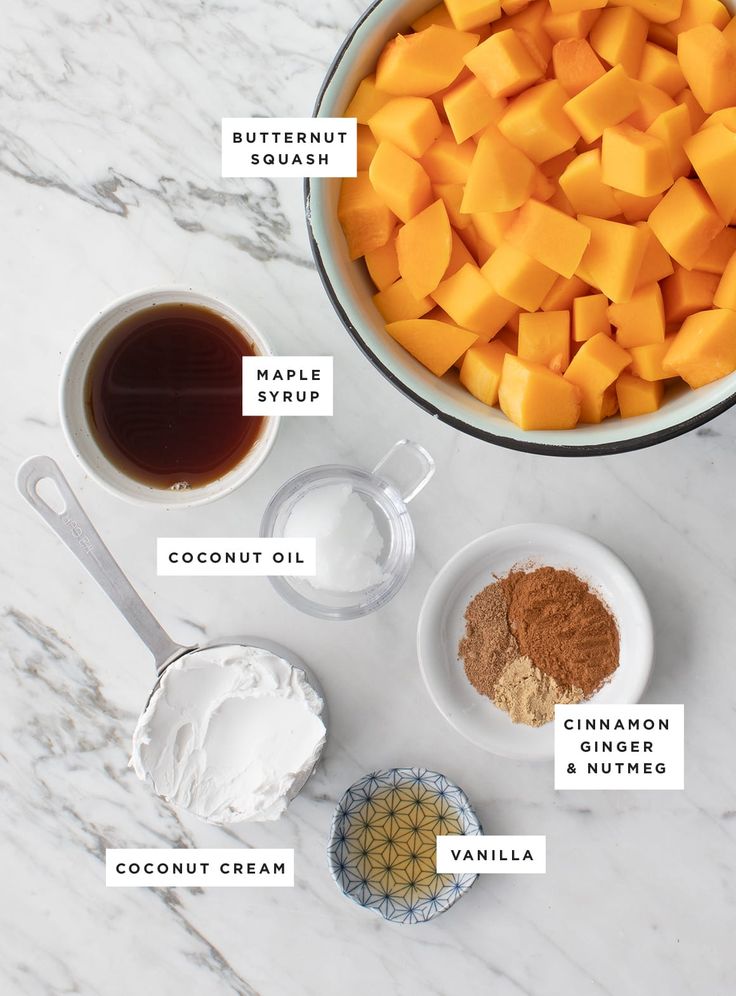 Pumpkin is a food that can be cooked and consumed in many different ways. Pumpkin is a bright and sweet baby food that allows you to introduce colors and diversify the texture and taste of the child. It has various benefits for improving overall health, and therefore, this vegetable should not be excluded from the baby's diet.
Pumpkin is a food that can be cooked and consumed in many different ways. Pumpkin is a bright and sweet baby food that allows you to introduce colors and diversify the texture and taste of the child. It has various benefits for improving overall health, and therefore, this vegetable should not be excluded from the baby's diet.
Cooking is healthy!
- Quinoa and pumpkin porridge;
- Pumpkin-apple juice;
- Pumpkin puree soup.
below is a list of all the recipes on the Encyclopedia Baby Food website or go to the Recipes section.
Easy to use sitemap Encyclopedia Baby Food with a list of all articles and recipes.
Types of pumpkin
Table of contents:
In our country, orange pumpkin is mainly consumed, but depending on different types, it can be of various colors, shapes and sizes, such as orange, yellow, white, green and others, spherical , cylindrical or pear-shaped, sizes from smallest to giant. The most common Russian species are nutmeg, large-fruited, hard-skinned pumpkins. It is best to use the nutmeg type for baby feeding with pumpkin, as it is considered the most delicious and vitamin variety.
The most common Russian species are nutmeg, large-fruited, hard-skinned pumpkins. It is best to use the nutmeg type for baby feeding with pumpkin, as it is considered the most delicious and vitamin variety.
Pumpkin season
Pumpkin is considered an autumn vegetable for a reason. Pumpkin season is from August to March, but the best time to use it in cooking is from October to November. It can be found on the market from August to March, but pumpkin has the best and richest taste in the middle of autumn.
The story of the pumpkin
The word " pumpkin" comes from the Greek " pepõn" which means " big melon". The word was gradually formed from the French - "Ponpon", from the English - "Pumpion", then renamed "pumpkin".
Pumpkin was one of the many foods used by Native American Indians and was an unexpected discovery for pilgrims. The Indians pounded gourd strips, dried them, made floor mats, and then sold them.
Although it is difficult to name only America as the birthplace of the pumpkin, some scientists name such countries as the north of Africa, China and even India.
In Rus', this vegetable appeared at the end of the 16th century, and gained particular popularity among the peasants.
Pumpkin benefits
Experts put pumpkin on the same level as zucchini and broccoli in baby food and recognize it as an important product in a child's diet. Pumpkin has an intense color, indicating a high content of beta-carotene, which converts to vitamin A. Pumpkin is also an excellent source of vitamins B1, B3, B5, B6, C. It is rich in magnesium, potassium and fiber, omega-3 fatty acids and complex carbohydrates such as starch. The main reason for introducing pumpkin into complementary foods is the presence in its composition of rare vitamins K and T, which are found only in this vegetable.
The vegetable stimulates the digestive system, and the fibrous structure of the pumpkin prevents constipation in the child.
Beneficial effect on bones and muscle structure, gastrointestinal tract and vision.
Prevents anemia, pumpkin contains more iron than apples.
Improves sleep.
Increases the body's resistance.
Strengthens the immune system.
Pumpkin contains potassium salts essential for excellent cardiac and vascular function. Pumpkin seeds are a natural source of phytosterols. Phytosterols can lower both total cholesterol and bad cholesterol (LDL) by inhibiting the absorption of dietary cholesterol. It is also a good source of zinc and polyunsaturated fatty acids.
Pumpkin is a rich source of fiber. Fiber quickly saturates the body, so the child can eat less and thus consume fewer calories.
B-carotene reduces sun damage to the skin and acts as an anti-inflammatory agent. In addition, α-carotene slows down the aging process and delays the appearance of wrinkles on the skin.
Pumpkin seeds are a rich source of the amino acid tryptophan, which is important for the production of serotonin, a hormone responsible for improving mood. A handful of pumpkin seeds can help in a psychological uplift.
Pumpkin prevents and helps control diabetes. The ingredients in pumpkin and its seeds provide an excellent aid in blood glucose absorption and help balance liver glucose levels.
Introduction to pumpkin complementary foods
Pumpkin complementary foods should be started at approximately 6-7 months of age. The orange color of the product is a natural sign of the possibility of developing an allergy to the product in a child, so most pediatricians advise adding this vegetable to the child's diet later. To begin with, zucchini, broccoli and cauliflower are introduced into complementary foods, and only then pumpkin. The rule of waiting 4-7 days with this vegetable must be carefully observed, as this is the first colored product in the baby's complementary foods. It is better if pumpkin complementary foods are introduced closer to 7 months. However, it must be taken into account that the risk of developing an allergy to pumpkin is much lower than to carrots or citrus fruit. We just advise caution, but do not give up the vegetable, as the benefits are too attractive.
We just advise caution, but do not give up the vegetable, as the benefits are too attractive.
Pumpkin is a rich source of essential nutrients for baby's well-being, immune system strengthening, deworming, antioxidants and antimicrobial properties.
Pumpkin seeds can also be introduced into baby's complementary foods, as they are rarely allergic. They can be introduced to a child at 10 months in a form that eliminates the risk of suffocation (i.e., the shredded look). Whole seeds are given to children aged 1.5 to 2 years. At this age, the child has strong teeth to chew well, and he is already on the general adult diet.
Pumpkin should be introduced as a regular vegetable, i.e. gradually bring to the prescribed norm in grams, based on the age of the child, we look at the complementary feeding scheme. Further, pumpkin can be given, if every day, then no more than 30 grams, here this rule is the same as with carrots. If you plan to give pumpkin 1-2 times a week, then 100-150 grams at a time, again depending on the age of the child and the portion eaten.
Baby is allergic to pumpkin
Pumpkin is one of the vegetables that can cause an allergic reaction in a baby because it contains a lot of carotene and contains the unique f225 protein. An allergic reaction to pumpkin is standard in the form of a small rash on any part of the body, unpleasant itching, swelling of the nose and throat. It must be borne in mind that an allergy to pumpkin may not appear immediately, but within about a week, therefore it is so important to keep a child's food diary in order to track the reaction to the product during the time and exclude it from complementary foods.
How to give pumpkin
At the age of 6-7 months pumpkin should be introduced as a one-component puree. Pumpkin juice can be given to a child after 12 months, pumpkin seeds can be given from 10 months. It can be combined with other fruits, vegetables, meat as new foods are introduced into the child's diet.
There are countless ways to introduce your baby to pumpkin after weaning.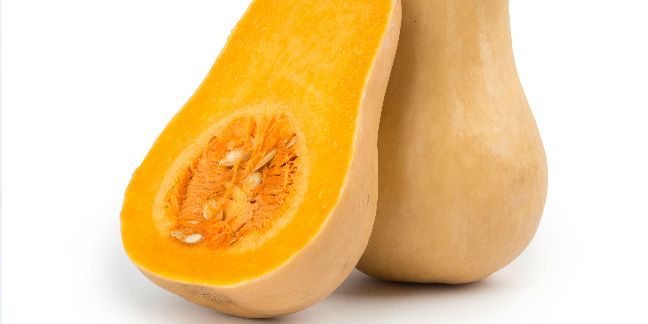 As your baby gets older, you can make pumpkin soup or pumpkin chips (these are thin slices of pumpkin baked in the oven with olive oil, salt, pepper, and various spices such as small coriander or ginger). In addition, pumpkin can be used as the main ingredient in a pie, muffins, and you can also make a salad for a child. Finally, we can use it to create incredible homemade jams and sweets.
As your baby gets older, you can make pumpkin soup or pumpkin chips (these are thin slices of pumpkin baked in the oven with olive oil, salt, pepper, and various spices such as small coriander or ginger). In addition, pumpkin can be used as the main ingredient in a pie, muffins, and you can also make a salad for a child. Finally, we can use it to create incredible homemade jams and sweets.
One of the easiest pumpkin ideas is to cut it into small pieces, sprinkle it with sugar and cinnamon and bake it in the oven or pot until tender. Accordingly, instead of sugar, you can pre-pour olive oil and season with salt, various spices, such as cumin and coriander, and you get a wonderful side dish for meat. You can cut the pumpkin into thin slices, fry and add to the salad. And you can also cook a wonderful pumpkin puree, which is suitable not only for meat, but also for fish or seafood. From pumpkin, Uzbek pilaf or fruit pilaf is surprisingly tasty. Pumpkin also goes well with potatoes.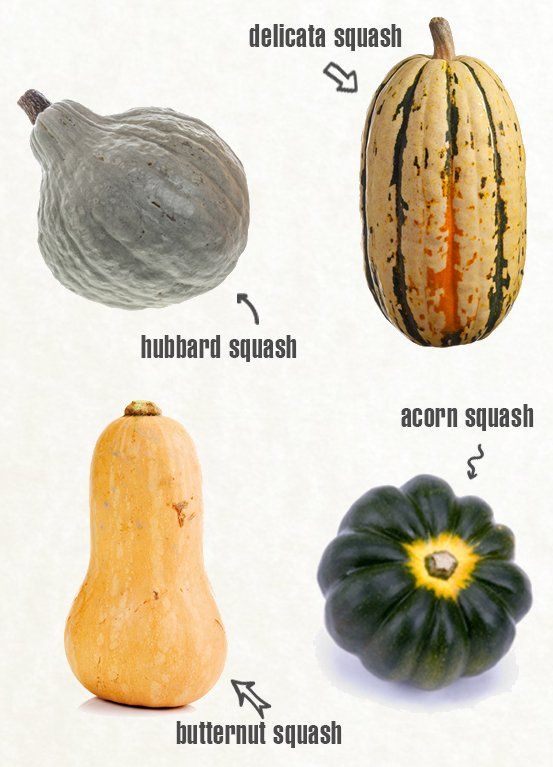 Meat in French, where there is no potato, but there is a pumpkin, it also turns out original and tasty.
Meat in French, where there is no potato, but there is a pumpkin, it also turns out original and tasty.
How to choose a pumpkin for feeding
When buying a whole pumpkin, you need to pay attention to the absence of marks of blows, cuts and other damage, as well as signs of decay. It is believed that the brighter the color of the pumpkin, the sweeter it is. The stalk should be dry, a sign of a ripe pumpkin. When tapping a vegetable, a dull sound is heard. The peel of the pumpkin should be firm and not squeeze through. If you buy a part of a pumpkin, then you need to pay attention to the seeds, which must be hard and ripe, the presence of empty seeds indicates the immaturity of the vegetable. And the pumpkin itself or its cut should look juicy and “alive”, as if it had just been cut.
How to store a pumpkin
A whole pumpkin can be stored on the balcony at a temperature of 5 to 15 degrees. The main thing is that the place is dry, cool, dark, not wet, then the pumpkin can be stored for 4 to 6 months. The main thing is to check it periodically and in case of damage to the product, use it in cooking.
The main thing is to check it periodically and in case of damage to the product, use it in cooking.
Pumpkin slices can be wrapped in cling film and refrigerated for up to one week. You can also store pumpkin in the freezer for up to 8-12 months when deep frozen.
Contraindications
A sweet, tasty, aromatic vegetable that many kids like, but don't overdo it. Pumpkin contains as much carotene as carrots. Excess carotene leads to allergic reactions. Pumpkin is dangerous for diabetics because it is rich in carbohydrates and sugars. It is also worth refraining from eating pumpkin for people suffering from stomach and duodenal ulcers.
Raw pumpkin is not recommended unless the place and method of its growth is known. Excessive consumption of this vegetable will please the yellow color of the child's skin.
How to cook pumpkin?
Traditionally, the child is offered one-component pumpkin puree. You can prepare it from fresh or frozen product.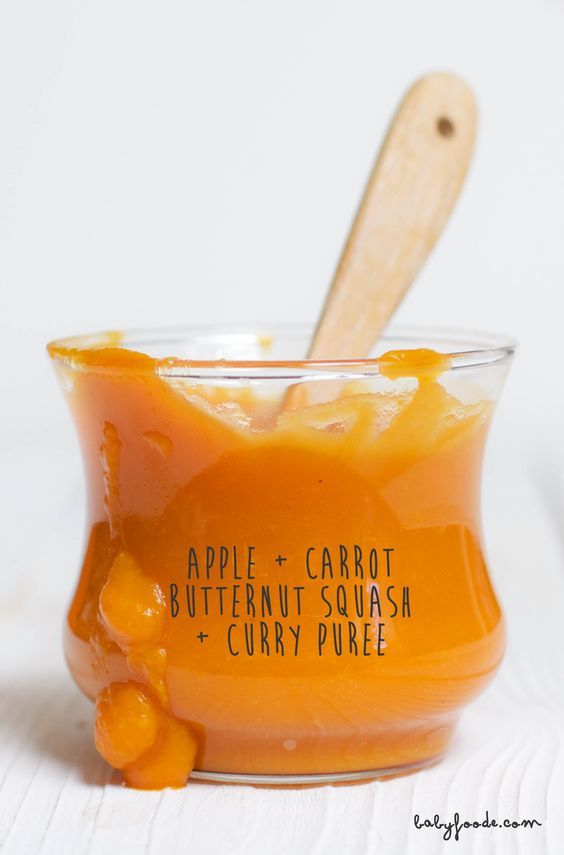 Everything depends on the season. You can cook pumpkin for feeding in a slow cooker, a double boiler, in an ordinary saucepan on fire, in an oven, in a microwave.
Everything depends on the season. You can cook pumpkin for feeding in a slow cooker, a double boiler, in an ordinary saucepan on fire, in an oven, in a microwave.
Remember that pumpkin tends to lose its nutritional value when cooked for a long time. Baking pumpkins for weaning will ensure that most of the nutrients are retained for the baby.
The pumpkin should be cooked immediately after it has been cut. After cooking, pumpkin puree should be used or immediately refrigerated.
cooking method pumpkin
If pumpkin is used for baking, it should be taken into account that the product is watery, if left in the air for a long time, especially with sugar, such a dish will be baked for a long time or not baked at all. Therefore, when I cook pumpkin muffins, I put the crushed pumpkin in the finished dough so that I can put everything in the oven in 10 minutes. And most importantly, put the baking powder at the very end a couple of minutes before baking.
Pumpkin juice
Pumpkin juice can be given to a child after 12 months. However, the juice must be prepared, i.e. boil. You can take pumpkin puree and dilute it with boiled water, you get a wonderful juice with pulp. Raw pumpkin juice should not be given to a baby under 3 years of age. After introducing citrus fruits into the baby's diet, you can add lemon or orange juice to pumpkin juice for a richer taste. You can combine pumpkin juice with other fruit juices, namely apple, pear, peach, etc.
However, the juice must be prepared, i.e. boil. You can take pumpkin puree and dilute it with boiled water, you get a wonderful juice with pulp. Raw pumpkin juice should not be given to a baby under 3 years of age. After introducing citrus fruits into the baby's diet, you can add lemon or orange juice to pumpkin juice for a richer taste. You can combine pumpkin juice with other fruit juices, namely apple, pear, peach, etc.
Complementary foods raw pumpkin
The raw unprocessed product contains much more useful vitamins and elements, but it is much more difficult for a baby to chew and then digest the rather rough texture of raw pumpkin, so you should refrain from eating it until the age of 3. After 3 years, offer the baby raw pumpkin, grated or as part of fresh fruit salads.
Pumpkin in baby food.
Freezing pumpkin
Lure pumpkin can be frozen. Usually a whole pumpkin is perfectly stored for a long time, but if it is cut into pieces, then it will last no more than 7 days in the refrigerator.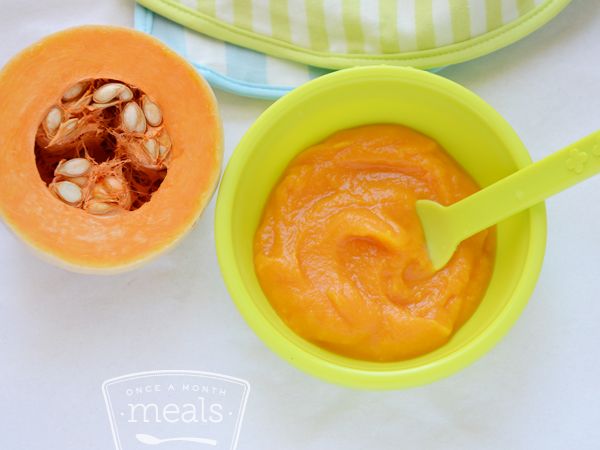 Therefore, the pumpkin must be washed, cut into small pieces, dried, folded into bags and put in the freezer for a quick freeze.
Therefore, the pumpkin must be washed, cut into small pieces, dried, folded into bags and put in the freezer for a quick freeze.
Pumpkin freezes perfectly. The finished pumpkin will turn into a brownish orange, so don't worry about that.
When freezing, leave some headroom on the top of the container or freeze it in a bag as pumpkin may expand when frozen.
Pumpkin may separate when thawed due to air bubbles, so pumpkin pieces are usually only used for making porridge or pumpkin puree. This will not affect the quality or taste of the pumpkin.
Pumpkin puree can be frozen in containers, ice cube trays or ziplock bags.
Frozen pumpkin slices can be stored in the freezer for 8 to 12 months, pumpkin puree can be stored for no more than 3 months.
Pumpkin Preservation
Pumpkin is rarely sealed in jars for long-term storage, as the product itself will lie perfectly all winter on the balcony. But sometimes you can cook wonderful dishes for even longer storage, especially for children.
Pumpkin is used to make excellent pumpkin juice for feeding, which is rolled up in jars and stored for more than a year. So in the summer you can please your baby with pumpkin juice. The juice is thick, with pulp, saturated, it can be diluted with boiled water. If you take sweet varieties of pumpkin, you can close the pumpkin juice without sugar.
Delicious pumpkin jam with the addition of a couple of oranges, delicate jam with orange flavor, will please any child. Moreover, pumpkin is a cheaper product, as for me, because I get it for free, so pumpkin-orange jam is just licking your fingers.
The history of the appearance of pumpkin in the diet
According to some sources, it was actively cultivated already 5-8 thousand years ago. In Europe, the pumpkin was brought from South America, and quickly took an important place in cooking and even medicine. In the modern world, it is just a delicious vegetable, but the initial attitude to the pumpkin was somewhat different: it was considered a raw material for the manufacture of medicinal products. On the basis of this plant, ointments were prepared and used in folk medicine as a remedy for helminths, and Avicenna recommended for a laxative effect. Let's figure out why this healing vegetable is so useful.
On the basis of this plant, ointments were prepared and used in folk medicine as a remedy for helminths, and Avicenna recommended for a laxative effect. Let's figure out why this healing vegetable is so useful.
Benefits of pumpkin
Pumpkin is a storehouse of vitamins, and a large part of them is found not only in the pulp, but also in seeds and flowers. Pumpkin has 4-5 times more carotenes than carrots. Carotenes are converted into vitamin A in the body, which is good for vision and is also a powerful antioxidant. Pumpkin contains vitamins C, E, K and almost all B vitamins.
The seeds contain many microelements, and pumpkin seeds are among the top three vegetables in terms of zinc content.
Harmful pumpkin
Even a healthy product can be harmful, so you should consider possible contraindications. Who should be wary of the introduction of pumpkin into the diet, said Alexander Voynov, dietetics and health consultant at the network of fitness clubs WeGym :
— Eating raw pumpkin is contraindicated for people with inflammatory diseases of the gastrointestinal tract, as well as those who who have stones in the gallbladder and kidneys, since pumpkin has a choleretic effect and can provoke the movement of stones. A raw vegetable is more difficult to digest, so it is better not to give unprocessed pumpkin to young children and the elderly. Diabetics should also not get carried away with pumpkin, as this can cause an increase in blood sugar levels.
A raw vegetable is more difficult to digest, so it is better not to give unprocessed pumpkin to young children and the elderly. Diabetics should also not get carried away with pumpkin, as this can cause an increase in blood sugar levels.
Sometimes frequent consumption of this vegetable can cause bloating and loose stools, then you need to reduce the portion size and frequency of consumption. Excessive consumption of pumpkin can lead to false carotene jaundice - the carotene contained in the vegetable causes yellowing of the skin. Occasionally, individual intolerance and allergies occur, in which case it is better to refuse the product.
It is also worth limiting the consumption of pumpkin seeds to those who are on a diet - you should remember about their high calorie content: 100 grams contain 559kcal.
Medical uses of pumpkin
Pumpkin is often used in dietetics - there are all-pumpkin diets. This low-calorie vegetable normalizes metabolism and reduces appetite due to the large amount of fiber and dietary fiber. However, you should be careful to lose weight with pumpkin.
However, you should be careful to lose weight with pumpkin.
— Obesity is a serious disease. Self-medication often leads to poor results. Contact the experts to find out all the nuances and choose the method of losing weight. Pumpkin, due to its beneficial properties, is often found in various diets, but only as part of a possible complex diet that will ensure weight loss without depriving the body of all the elements it needs. Pumpkin is recommended to be consumed in the morning and preferably raw, - comments Alexander Voynov .
Pumpkin is a storehouse of vitamins, a large part of them is found not only in the pulp, but also in seeds and flowers. Photo: pixabay.com Pumpkin has a positive effect on the condition of the male reproductive system. The pulp of the vegetable has a high concentration of vitamin E-tocopherol, which is translated from Greek as “bearing offspring”. Seeds contain a lot of zinc: 30 g fill up to 70% of the daily requirement. Also, pumpkin seeds are champions among products for the content of L-arginine. Together, they have a noticeable effect on the entire body: they participate in the synthesis of testosterone, normalize the function of the prostate gland, improve the state of the cardiovascular system, and have a positive effect on erectile function.
Together, they have a noticeable effect on the entire body: they participate in the synthesis of testosterone, normalize the function of the prostate gland, improve the state of the cardiovascular system, and have a positive effect on erectile function.
The thin film-shell of pumpkin seed contains the amino acid cucurbitin, which has anthelmintic properties - this has been used in traditional medicine. For example, a decoction of unpeeled seeds was given to children and pregnant women due to the almost complete absence of side effects.
Pumpkin is a storehouse of vitamins, a considerable part of them is found not only in the pulp, but also in seeds and flowers. Photo: pixabay.com Seed gruel masks, as well as pulp juice compresses, are used in cosmetology to moisturize and brighten the skin, reduce inflammation. The oil extract accelerates the healing of epidermal damage.
Pumpkin has a laxative, anti-inflammatory and choleretic effect, so a small amount is useful for people with congestion and constipation.
The high potassium content in the pulp reduces the risk of cardiovascular disease and strengthens the walls of blood vessels, which is extremely beneficial for people suffering from atherosclerosis and high blood pressure.
Cooking uses of pumpkin
Recipes with pumpkin exist in almost all cuisines of the world. From this vegetable you can make soups, desserts, mashed potatoes for baby food, cereals; bake with other ingredients - the fantasy is not limited by anything. In Italy, even flowers fried in batter are used for food. Raw pumpkin is added to salads.
Pumpkin is remarkable in that it retains a considerable amount of nutrients even after heat treatment.
Pumpkin casserole
One of the most healthy dishes. Perfect for breakfast or dinner due to the lightness and satiety due to fiber. Add your favorite foods - apples, nuts or dried apricots
Photo: @shameel-mukkath, pexels.com| Pumpkin | 0. 3 kg 3 kg |
| Milk | 90.5247 90.5 cup0248 |
| Round rice | 0.5 cup |
| Eggs | 3 pcs. |
| Butter | 2 tbsp. spoons |
| Sugar | 3 tbsp. spoons (or to taste) |
| Salt, cinnamon, raisins | to taste |
Boil rice in water, rub raw pumpkin finely. Beat eggs with sugar, salt and spices. Mix all ingredients, pour milk. Grease the form with oil, sprinkle with breadcrumbs and lay out the casserole. Bake in the oven at 180 degrees or in a slow cooker (in the "baking" mode) for 35-50 minutes, depending on the thickness. Cool and serve with sour cream or honey.
Pumpkin Cream Soup
Perfect for lunch. You can add greens, garlic or white bread croutons. For dietary nutrition, replace cream with low-fat milk
Photo: pixabay.com| Pumpkin | 500 g |
| Potatoes | 2-3 pcs.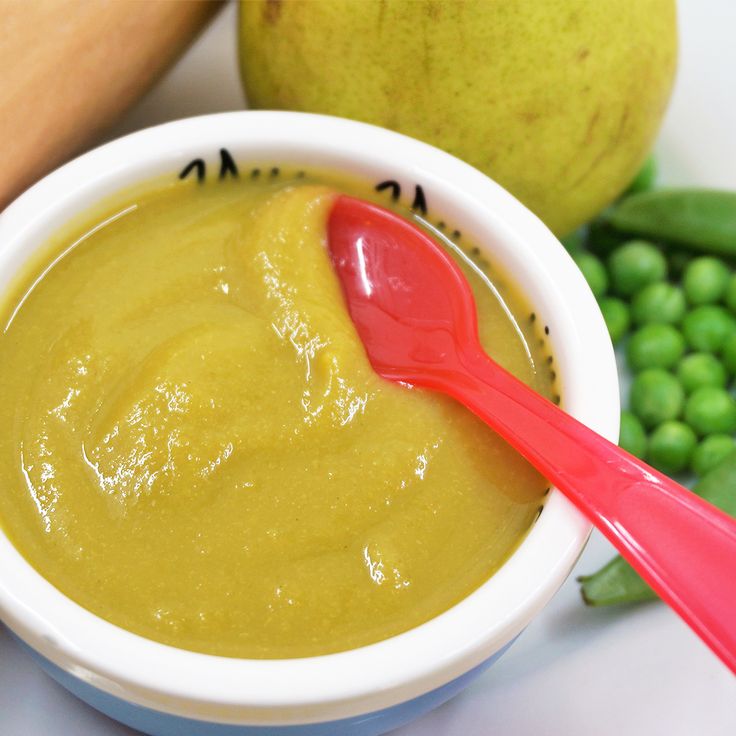 |
| Carrot | 1 pc. |
| Bulb | 1 pc. |
| Cream | 1 cup |
| Spices | nutmeg, turmeric, ginger to taste |
| Salt | to taste |
How to choose and store a pumpkin
Before buying, you should pay attention to the appearance of the pumpkin: the peel must be intact, the stalk has not been cut off and there are no signs of decay. This will ensure long-term storage. An ideal place for a pumpkin would be a cellar or other cool and light-tight places. In good conditions, the vegetable can lie for a couple of years, but it is better to use it within a few months - over time, the amount of nutrients in the pumpkin decreases.



